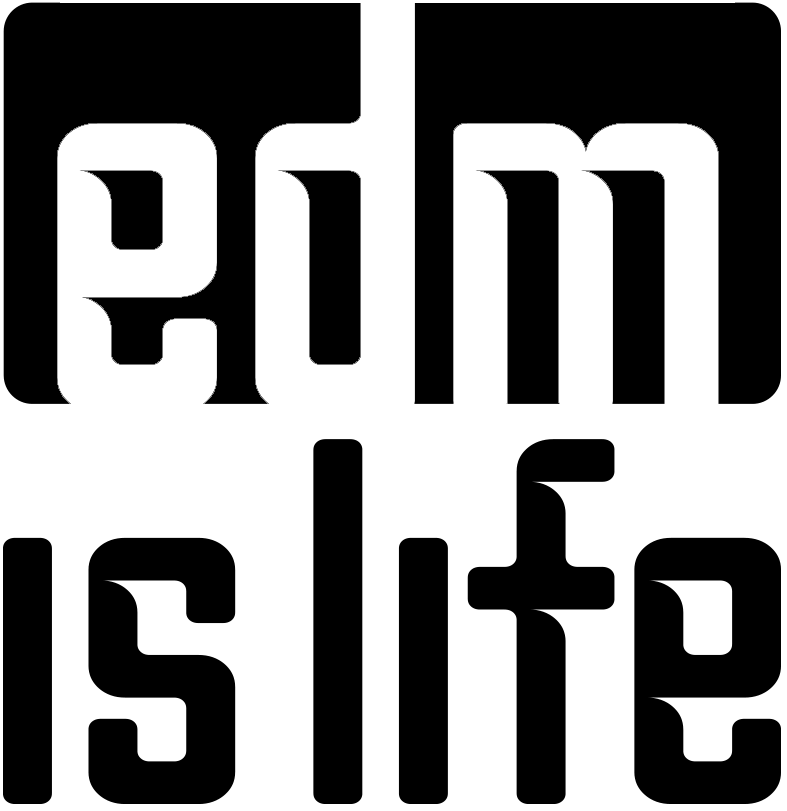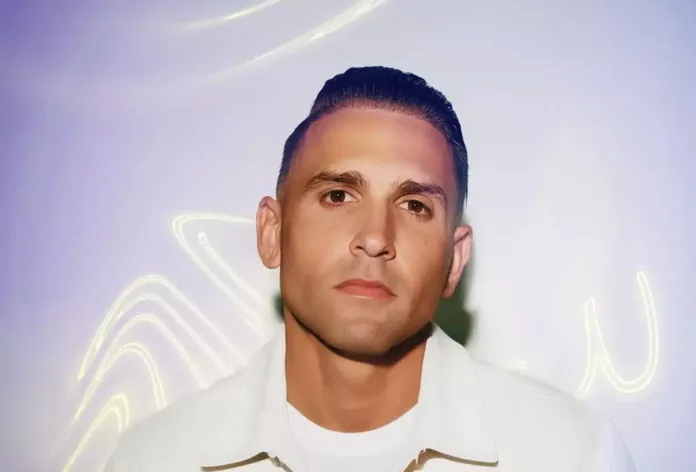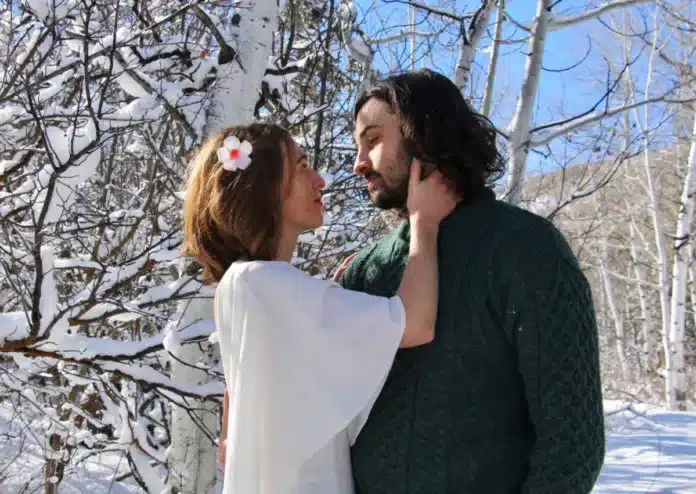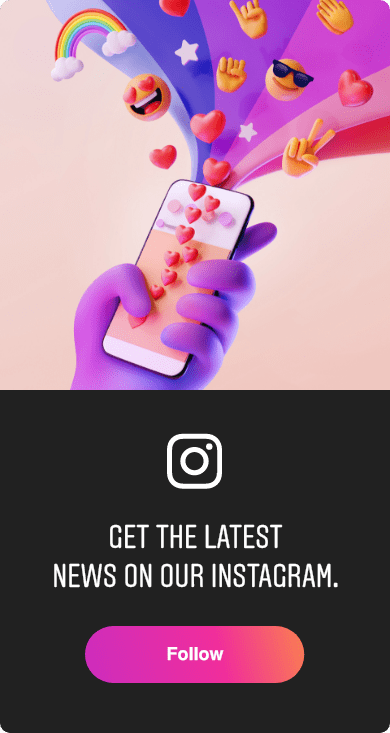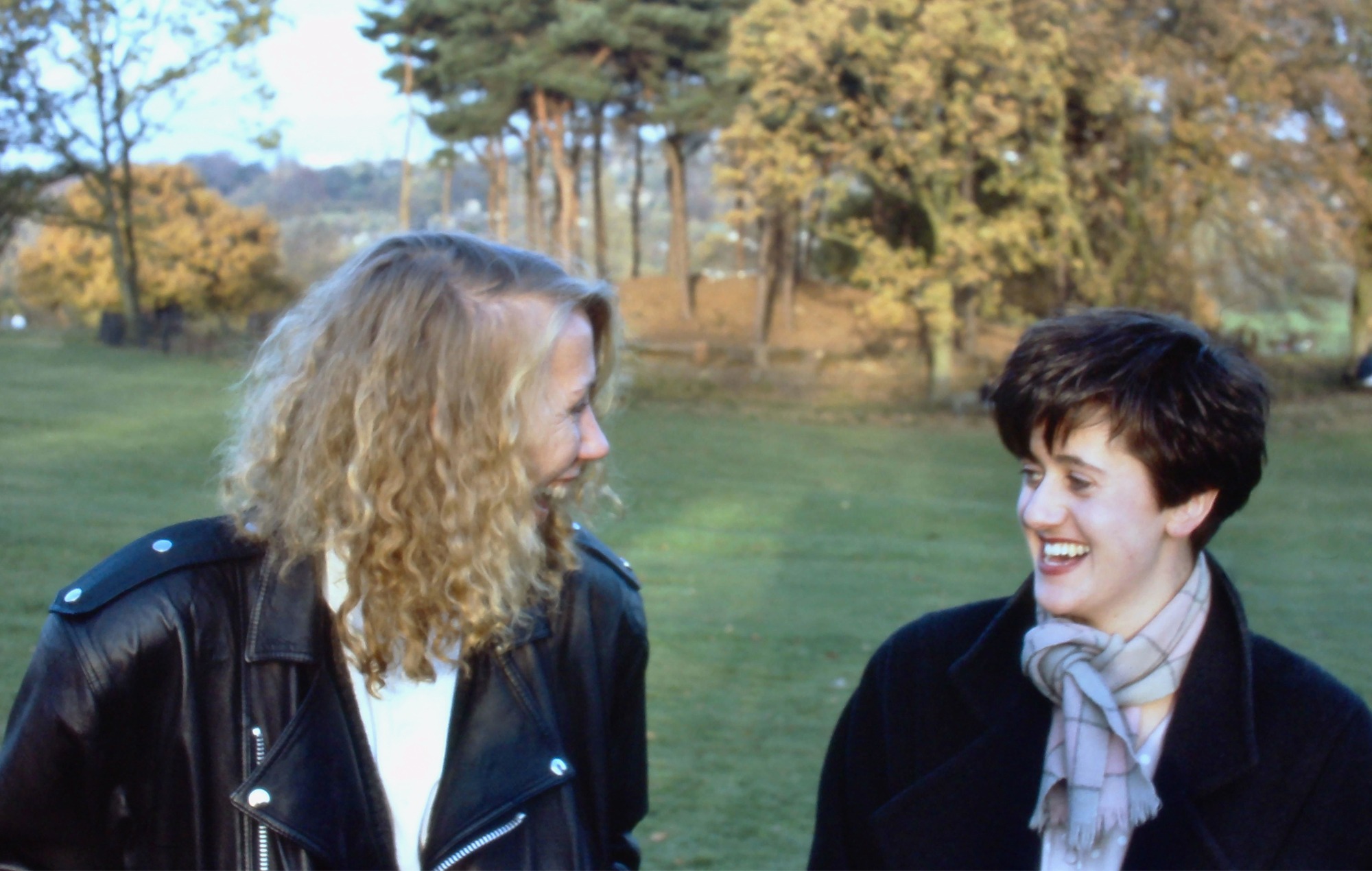
Tracey Thorn on new book ‘My Rock ’n’ Roll Friend’, about her friendship with The Go-Betweens’ Lindy Morrison: “I’m her plus one”
Tracey Thorn, Everything But The Girl’s vocalist, has written a new book about her friendship with The Go-Betweens drummer Lindy Morrison. Titled My Rock ’n’ Roll Friend, after the influential Australian group’s 1988 song ‘Rock And Roll Friend’, it hits shelves April 1.
Thorn first met Morrison in March 1983 backstage at the Lyceum in London, when their bands Marine Girls and The Go-Betweens shared supporting duties for an Orange Juice gig. As women in a male-dominated rock music sphere, the pair became confidantes when the Australian band spent several years living in London in the mid-’80s in a small apartment shared with Nick Cave.
As the pair went on to achieve opposite levels of success (The Go-Betweens struggling to hit commercial highs), they remained in touch, sharing their lives in letters until an abrupt stop in 1998 with the advent of email.
Thorn – who is also an accomplished author and columnist – began to write after she flew to Australia in 2019 and spent a week reconnecting with Morrison in person for the first time in 20 years. The book’s stories and intricate details were compiled from a mixture of interviews, kept letters, and diary entries provided by Morrison herself, as well as existing accounts of the band.
At Clovelly Beach with Lindy Morrison pic.twitter.com/I3vchBwcjT
— Tracey Thorn (@tracey_thorn) September 5, 2019
My Rock ’n’ Roll Friend provides context for Morrison’s mercurial character through her formative early 20s – when she worked for the first iteration of the Queensland Aboriginal and Torres Strait Islander Legal Service, embarked on a hitchhiking trip through Europe (where she played bridge with Roger Moore), and played in the punk band Zero.
It’s also at times a feminist retelling of The Go-Betweens story, re-litigating several key aspects of the band’s myth. “If Robert [Forster] and Grant [McLennan] (in their dreams) were Lennon and McCartney,” she writes, “then Lindy was Yoko – the woman in between the two men, creative in her own right, disrupting their friendship.”
NME spoke to Thorn about subverting existing myths about The Go-Betweens, navigating sexism in rock music and being careful about telling her friend’s story.

When you pitched My Rock ’n’ Roll Friend to Lindy, did she ever mention wanting to write her own memoir instead?
“That was my first question to her. She’d actually written a short piece for The Guardian, about being in Zero and running away from the cops at every gig. She put it up on Facebook, and a couple of people said to her, ‘Lindy, you have so many great stories you should write a book.’
“And I asked her, ‘Do you think of doing that? You’ve got such a story to tell, there’s loads of stuff people don’t know.’ She just said, ‘Honestly, no I really don’t think I can do it. I don’t have the energy or the time. I don’t have the concept for it.’ I just said to her, jokingly at that point, ‘Tell me your stories, I’ll write it for you.’ We laughed about it, went away and I thought, ‘Hang on, actually I could do something about her, using her material and stories but also our friendship’.”
In your book, you correct the record of some of the other versions of The Go-Betweens story – Robert Forster’s memoir Grant and I, the documentary The Go-Betweens: Right Here. Did you set out to do that?
“I felt very much that Lindy’s voice had been pushed down in the mix in those tellings of the story. I think Robert’s book is great, and I think the documentary’s great too in many ways, but they have an angle. In the worst moments, there was unfairness towards Lindy. Sometimes her role in the band was downplayed. Sometimes her motivations were portrayed in an unforgiving light. Sometimes the things that might have pushed her to be a certain way or act a certain way were misinterpreted.
“Again, I felt sympathy with that because I think, ‘Shit, things like that have happened to me in the past’. I got inside the story then, and once I started working on it I became even more determined to try and tell her truths.”
“We’re drawn to the worlds of culture, rock music for the same reason men are: to find an escape from the straight world, freedom and expression”
One line in the book I loved was when you described a Go-Betweens interview, where the interviewer was asking Lindy about sexism, sitting next to Robert: “The conversation is about sexism, and the man is wearing lipstick but she’s the one doing all the work”. Do you think Robert was ever conscious of that?
“No, not at all. I do think it’s one of the things women encounter within any sort of alternative scene. We’re drawn to the worlds of culture, rock music for the same reason men are: to find an escape from the straight world, freedom and expression. Then, what women encounter in those alternative worlds is exactly the same stereotypes and patronising behaviour as the bigger world, and that’s where the disappointment comes in.
“You just think, “I wanna feel like we’re in this together and we are equals, and we understand we’re all drawn to this for the same reasons.” I could look at Lindy, just being this character who out there in the normal world, is considered larger than life. She’s a force of nature, she’s too loud, she swears too much – you’d think, ‘OK, put her in the world of rock ‘n’ roll, surely she’ll be in her element, totally accepted as the epitome of what you’re supposed to be’. And yet, she constantly encounters the same attitudes – “You’ve got to be more demure, you’re over the top’.”

You describe giving Lindy assurances about the book, telling her to be as indiscreet as possible, while you will be discreet as you write it. Did you have to hold much back?
“There were some things she asked me to take out, and I did… It’s a leap of faith letting someone else use that much of your life to tell a story. I’m very aware I spent my whole life being written about, and then in more recent years started to write my own stories myself. I know how both things can feel. I know how exposing it can feel to be written about by someone else. I am sympathetic to the fact that at some points she would feel like she’s not the actual one telling the story.”
Did you resist putting more of your own career and life in there?
“I did feel like I’d told that side of the story already. There didn’t seem very obvious points where that should be more about that. I felt that would have skewed the balance in the wrong direction. I think when I appear, I appear as Lindy’s friend. I think the moment I arrive at the party, I say I’m with Lindy Morrison. I’m her plus one.”
I can’t help but acknowledge your quote dated – and sexist – NME coverage from the ’80s. From 1986, describing Lindy: “… a braver soul than me would tell you that she drinks, swears and threatens too much (no, not for a woman, for ANYONE!)”.
“I mean all the music press, to be fair, [was sexist]. At least NME wasn’t like Sounds that actually had page 3 girls plastered on the wall as you walk past to be interviewed. But yeah, the music press was very largely male in those days. I think almost every interview I ever did was a male journalist. I think the thing that was difficult, Lindy and I both felt, was what that sometimes meant was you had to do so much explaining all the time.
“You weren’t understood automatically; there wasn’t that ease of knowing things you said in an interview or in my case, things I wrote in songs would be understood. I sometimes felt I would write things – I know Lindy felt she would say things – and it would just go over the interviewer’s head.”

At the end of the book you say that before you started writing it, you were at an existential crossroads and needed to redefine your life. Do you feel like writing it achieved that?
“I don’t know, because obviously the weird thing that then happened was the year of COVID. I think when any of us look back at where we were maybe a year ago, we’d probably all feel like we were in a massively different place. I certainly do, and I don’t know if that’s just because I wrote a lot of stuff and got a lot of stuff out of my system and worked through some of it.
“But we’ve also had this weird year of our lives being put on pause. For being at the point of thinking, ‘what am I going to do for the rest of my life, what direction am I going in’, then… this weird feeling. Those kinds of decisions can be quite overwhelming sometimes, thinking about planning your life and then something like this happens and it just reminds you that you’re not even planning your life.”
Do you see My Rock ’n’ Roll Friend as a rock ‘n’ roll mythmaking, or anti-myth-making?
“Against mythmaking. I think everything I write is a bit iconoclastic. There’s a danger in myth-making. I think myths end up being quite repetitive and dull. It’s the uniqueness of people’s stories I want to get at. These are individuals, they’re not just stereotypes. That’s where you get to the heart and richness of a story. That’s where telling the truth, really trying to get to the nub of the truth of it is. Then, you end up with really vivid characters not just two-dimensional rock heroes. We’ve heard all those stories so many times.”
Tracey Thorn’s ‘My Rock ’n’ Roll Friend’ is out April 1 via Canongate Books
